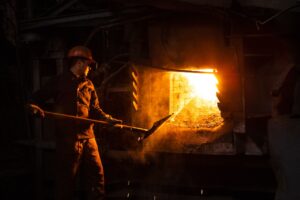Fireworks have been lighting up the night sky as a way to celebrate for thousands of years – and the Fourth of July is no exception. In fact, the tradition of fireworks on July 4th in the United States dates back to the first anniversary of independence in 1777, when fireworks were displayed by organizers in Philadelphia and Boston.
Here is what to know about the business of fireworks ahead of the Independence Day holiday.
Types of fireworks
There are two distinct types of fireworks: consumer and display. Display fireworks are those used in fireworks shows, generally under the close supervision of a professional and trained pyrotechnic. The regulation of these, including the importing, manufacturing and transporting are controlled by the Bureau of Alcohol, Tobacco, Firearms and Explosives (ATF).
Consumer fireworks are the smaller kind most anyone can purchase. Although manufacturers of commercial fireworks in the U.S. do need a license through the ATF, the ATF does not regulate the importation, distribution or storing of consumer fireworks. Those responsibilities are left to other federal, state and local government agencies, including the Consumer Product Safety Commission.
The sale of consumer fireworks
Massachusetts is the only state that bans all types of consumer fireworks – meaning the only way to see fireworks in the state is through a professional show. However, all other states allow some form of consumer fireworks to be bought and sold, with regulations that can vary by the state and even the county. For example, 15 states permit only non-aerial and non-explosive fireworks from being sold. These include sparklers, poppers, and crackling items and are often referred to as ‘safe and sane’ fireworks due to their reduced likelihood of causing injury. California has a whole list of approved fireworks.
The consumption of consumer fireworks has been steadily increasing for decades, but the onset of the pandemic may have helped fuel the demand in this sector of the industry. In the summer of 2020, many cities and organizations canceled their Independence Day events and subsequent firework shows. In order to get their firework fix many consumers shifted to purchasing fireworks themselves, with CNN reporting that demand for consumer fireworks was up 115% compared to the year before.
And that demand has not gone away, despite high inflation rates.
Looking forward
In response to health studies and growing concerns about the negative effects of fireworks, on wildlife, domestic animals, and the environment, businesses are taking it upon themselves to find greener alternatives to fireworks. Some alternatives focus on replacing fireworks altogether with laser or drone shows, while others attempt to make more eco-friendly versions of the products we are so accustomed to.
In the 1990s, Disneyland, a place that sets off millions of fireworks a year, worked with the Los Alamos National Laboratory to develop more environmentally friendly fireworks after nearby residents complained of the almost nightly smoke. By 2004 they were able to develop a smokeless launcher that eliminated the need for using black powder while also allowing them to more precisely time their shows. A win-win scenario.
Although promising for a new generation of fireworks, a 2008 article from the LA Times estimated that these ‘cleaner’ fireworks cost 10 times more than the ones produced in China and thus would likely remain less popular among groups organizing Independence Day celebrations. Strict regulations also make manufacturing fireworks more challenging for domestic producers.
Indeed, the majority of fireworks in the U.S. are still imported rather than produced domestically with $315 million worth of fireworks coming from China alone in 2019, accounting for 94% of fireworks imported that year. Last year, the U.S. imported $580 million worth of fireworks from China, while exporting around $8 million to other countries.
Independence Day was one of the four original dates established as a federal holiday in 1870 and since it falls on a Tuesday this year, there will be no tip next week. Enjoy the holiday!






